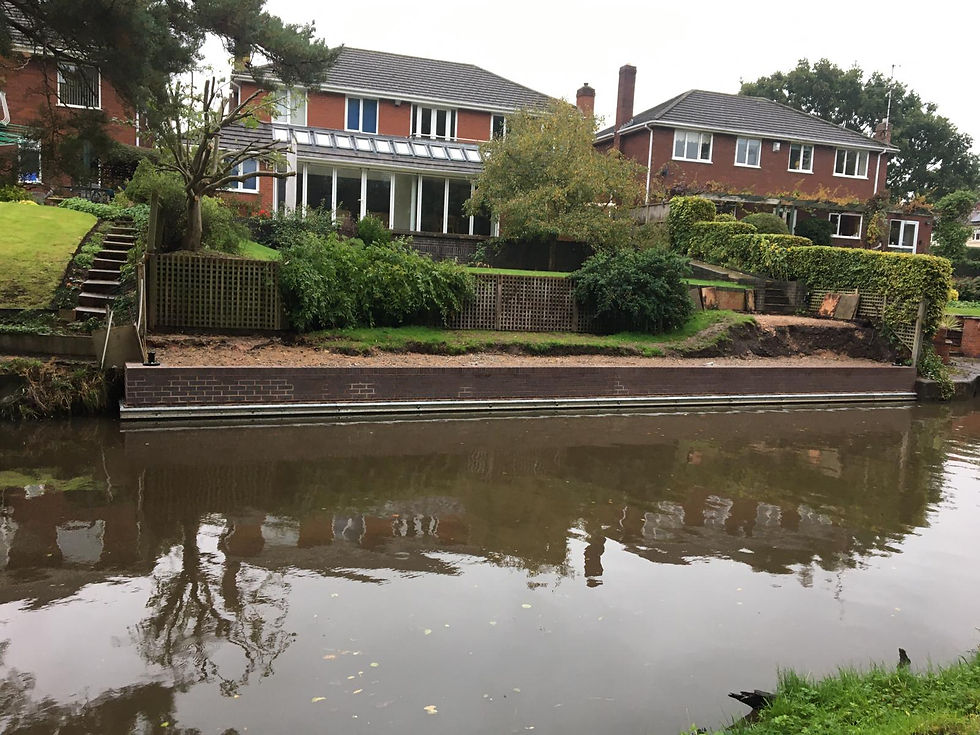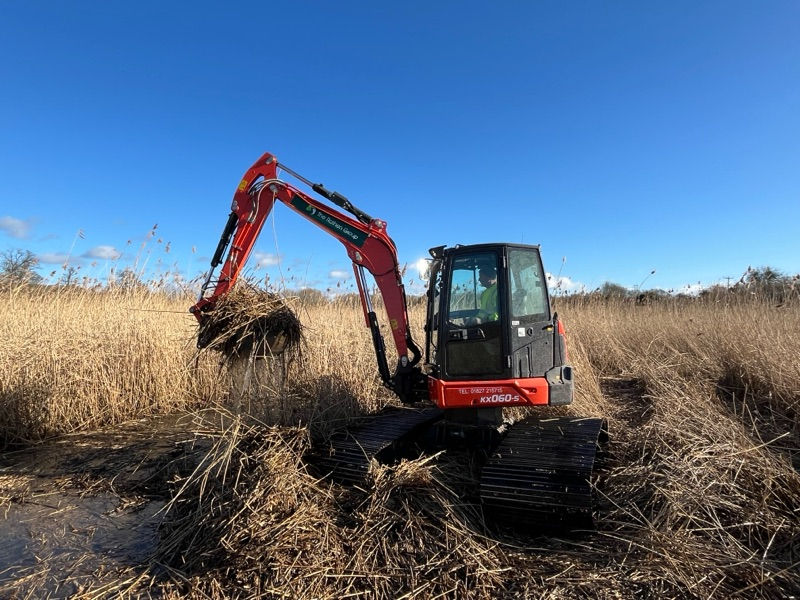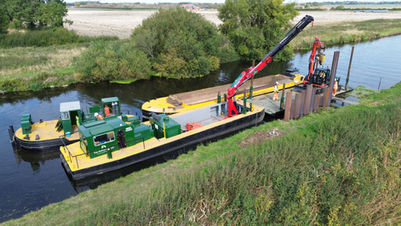
Piling
Built for water, made to last. Piling is more than posts in the ground — it’s the start of something solid.
We get it right from the first strike.
Contract services
Our Specialist Piling Systems
The Rothen Group specialises in high-quality marine piling for canals, rivers, lakes, and inland waterways across the length and breadth of the UK. Whether you’re stabilising a riverbank, building a new marina, or reinforcing a failing structure, our piling contractors have the skills and kit to get it done right.
No two sites are the same – and neither are our piling systems. We delve deep into your project’s needs, inspecting the site, factoring in soil, water levels, load demands, access, and more. We then recommend a comprehensive solution that guarantees strength, stability, and value for money.
From design to installation, we manage every step of the piling process – including any backfilling or reinstatement. Our site-sensitive methods help restore and protect the waterway environment.
Ready to secure your site with expert piling? Contact The Rothen Group today for personalised advice and a free consultation.

Dredging
View More

Lock
maintenance
View More

Lock
maintenance
View More

Dredging
View More

Dredging
View More

Lock
maintenance
View More

Lock
maintenance
View More

Dredging
View More

Gallery

FEATURED CASE STUDY
Habitat Creation Coney Meadows, Droitwich
Coney Meadows is part of a nationwide project to restore the UK’s wetlands. Since the 17th century, large areas of reedbeds have been stripped and converted into agricultural land, massively reducing the number of habitats available for wetland animals.

FEATURED CASE STUDY
Changing the Shape of the River Derwent, Derby
Following the storm seasons of 2023 & 2024, the EA set out to review its impact on the UK’s waterways. The River Derwent in Derby was flagged after a sonar scan of its navigation identified a scour hole – a direct result of heavy rainfall pushing sediment downstream.
Piling is the process of driving long columns – known as piles – into the ground to support structures or reinforce the banks of waterways. It’s often used to stabilise embankments, prevent erosion, or provide a foundation for moorings, jetties or buildings.
Canal and marine piling are the same principle, applied within a water environment. Also known as aqua piling, the process creates a retaining wall between the bank and the water – or supports existing marine structures, e.g., wharf piles or mooring pilings. A professional piling contractor always ensures each installation meets safety, structural, and environmental requirements.
What is canal and marine piling?
It’s easy to get confused with all the terminology. Let’s keep things simple:
A mooring piling refers to a vertical support driven into the ground to secure boats and floating structures. It’s not designed to reinforce the bank but to provide safe, stable anchorage.
A piling dock (or dock piling) serves a similar purpose. It is also driven into a seabed, riverbed, or canal bank, offering a stable platform that doesn’t change with water levels. It’s a popular option for marinas, private moorings, and boatyards.
Sometimes, you’ll hear these terms referred to as boat pilings. This helps distinguish them from other forms of structural marine piling, where the goal is to stabilise the bank or support a fixed structure.
What are mooring piling or piling docks?
Picture piling and you’ll think about driving long columns into the ground. However, the term piling can also refer to sheet piling. Here, a wall of interlocking steel sheets is driven into the riverbank to prevent it from collapsing into the river.
These sheets are immensely strong, making them ideal for long-term erosion control and durable piling systems for boat moorings and infrastructure. They secure the integrity of the bank, offering longevity and reliability for 20 years or more. We recommend this option if you’re stabilising a long stretch of riverbank – especially if erosion is evident.
What is marine sheet piling?
Choosing the right pile or bank stabilisation technique can save you considerable time and money. We’re proud to offer pragmatic, expert-led recommendations for every project, including guidance on:
Steel sheet piles – long-lasting, high-load and corrosion-resistant
Timber piles – ideal for a more natural look with surprising durability
Plastic piles – lightweight, resilient, and environmentally friendly
Gabion baskets – perfect for soft edges and bioengineering approaches
Nicospan and other bank protection systems
Unsure which option to pick? Don’t worry – we’re here to support you every step of the way. The right material depends on your project’s purpose, site conditions, and budget. Speak to our team for a detailed explanation of the different options and what’s right for your site.
What is the best material for marine piling?
We offer a range of piling systems for all situations, sites, and budgets, including marine pilings for rivers and canals, mooring pilings, piling docks, and other forms of boat piling. Each of these options can be completed with any of the materials we use; however, certain options might be recommended depending on the site conditions.
Which piling systems do you offer?
FAQ
Your questions answered
Our Accreditations
about us
A decade of
The Rothen Group
With decades of experience on the UK’s inland waterways, The Rothen Group is a trusted name in canal and river engineering. From pile driving and bank repairs to full-service infrastructure projects, we help clients deliver safe, sustainable solutions for complex environments.
Our skilled team includes qualified engineers, machine operators, and project managers who are passionate about protecting and preserving the UK’s waterway network. We combine traditional skills with modern technology to deliver outstanding results – on time, on budget, and always with a care for the environment.



























